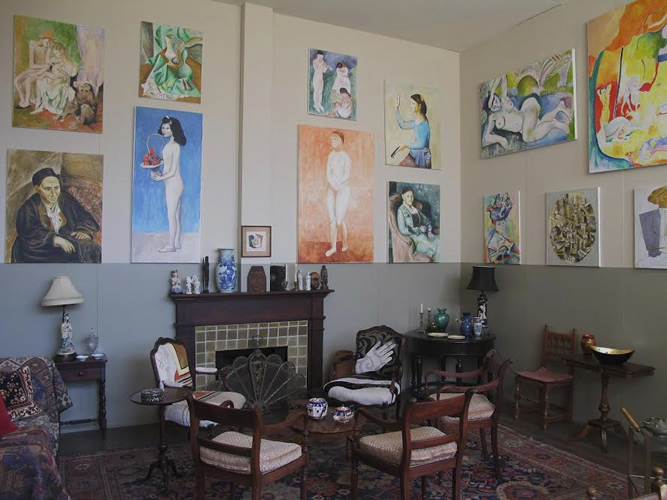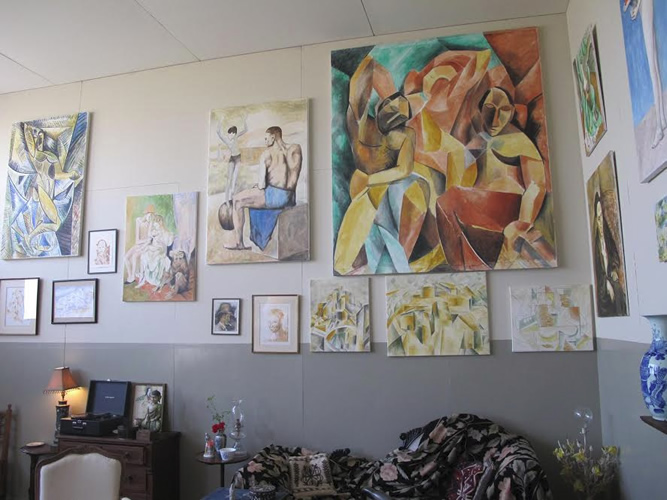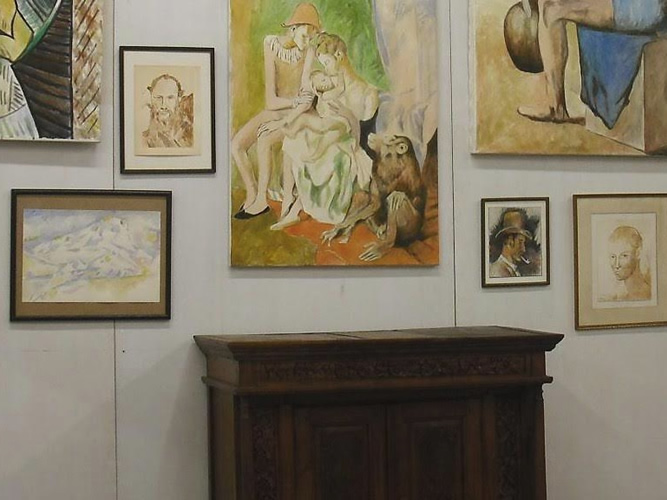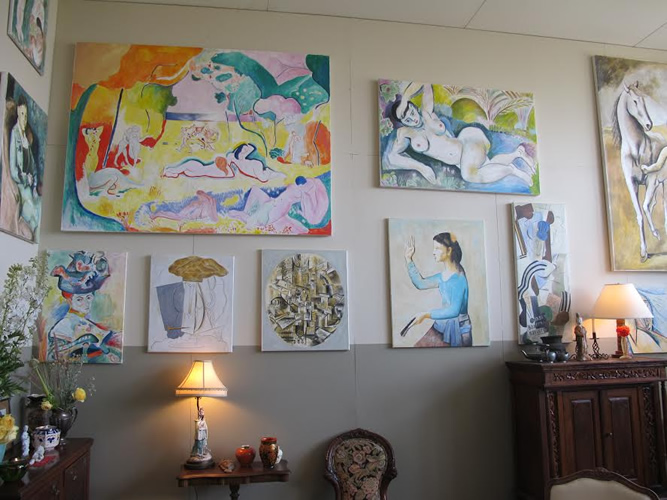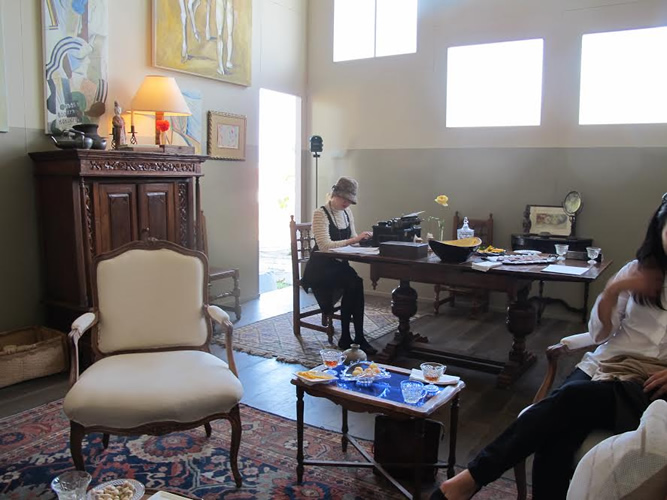Salon de Fleurus Presented by Fine Art Dealers Association
Salon de Fleurus is an educational institution dedicated to assembling, preserving, and exhibiting memories on early modern art. A simulacra of Gertrude Stein’s Parisian salon, it is a project that displays and references a story of modern art’s beginnings through collecting and exhibiting, and through the social history of the salon itself. The Salon de Fleurus questions where, why and how certain narratives of modern art originated through the structure that first canonized them.
Its permanent installation was located at 41 Spring Street, New York, and was open to the public from 1992 – 2013. Now, under the auspices of Independent Curators International (ICI) the Salon de Fleurus will travel around the world to continue to question the ways we remember and make sense of art history.
Salon de Fleurus is a traveling exhibition organized by Salon de Fleurus and Independent Curators International (ICI), New York. The exhibition and tour are made possible by The Fine Art Dealers Association (FADA), and with the generous support from ICI’s International Forum and the ICI Board of Trustees.
For more information, please visit www.curatorsintl.org/exhibitions/salon-de-fleurus
QUOTES: Independent Curators International (ICI) with the support of Fine Art Dealers Association (FADA) is sending Salon de Fleurus on a grand tour to other improbable sites. This dislocated New York simulacrum, after pinpointing the American origin of the twentieth-century narrative of modern art, has now become nomadic as well as authorless. That fictional recreation, which coalesces the best of the Parisian salon’s collection—or, as Walter Benjamin recently put it, these “specimens of our collective memory”—will exist for the next few years as a wandering apparition, materializing unpredictably, incrementally radiating questions about the global and the local, the nomadic and the displaced.
-Kim Levin, 2015
The Steins’ collection seems to have influenced many American collectors in their understanding of modern European art of the early twentieth century as being daring and adventurous. It’s why there are Fauvist, Cubist, Futurist, abstract, and Dada works at the foundations of a number of American collections. This in turn established in America a picture of European art as avant-garde, which was not exactly the image most Europeans had about themselves.
-Alfred H. Barr, 2016
Its permanent installation was located at 41 Spring Street, New York, and was open to the public from 1992 – 2013. Now, under the auspices of Independent Curators International (ICI) the Salon de Fleurus will travel around the world to continue to question the ways we remember and make sense of art history.
Salon de Fleurus is a traveling exhibition organized by Salon de Fleurus and Independent Curators International (ICI), New York. The exhibition and tour are made possible by The Fine Art Dealers Association (FADA), and with the generous support from ICI’s International Forum and the ICI Board of Trustees.
For more information, please visit www.curatorsintl.org/exhibitions/salon-de-fleurus
QUOTES: Independent Curators International (ICI) with the support of Fine Art Dealers Association (FADA) is sending Salon de Fleurus on a grand tour to other improbable sites. This dislocated New York simulacrum, after pinpointing the American origin of the twentieth-century narrative of modern art, has now become nomadic as well as authorless. That fictional recreation, which coalesces the best of the Parisian salon’s collection—or, as Walter Benjamin recently put it, these “specimens of our collective memory”—will exist for the next few years as a wandering apparition, materializing unpredictably, incrementally radiating questions about the global and the local, the nomadic and the displaced.
-Kim Levin, 2015
The Steins’ collection seems to have influenced many American collectors in their understanding of modern European art of the early twentieth century as being daring and adventurous. It’s why there are Fauvist, Cubist, Futurist, abstract, and Dada works at the foundations of a number of American collections. This in turn established in America a picture of European art as avant-garde, which was not exactly the image most Europeans had about themselves.
-Alfred H. Barr, 2016
